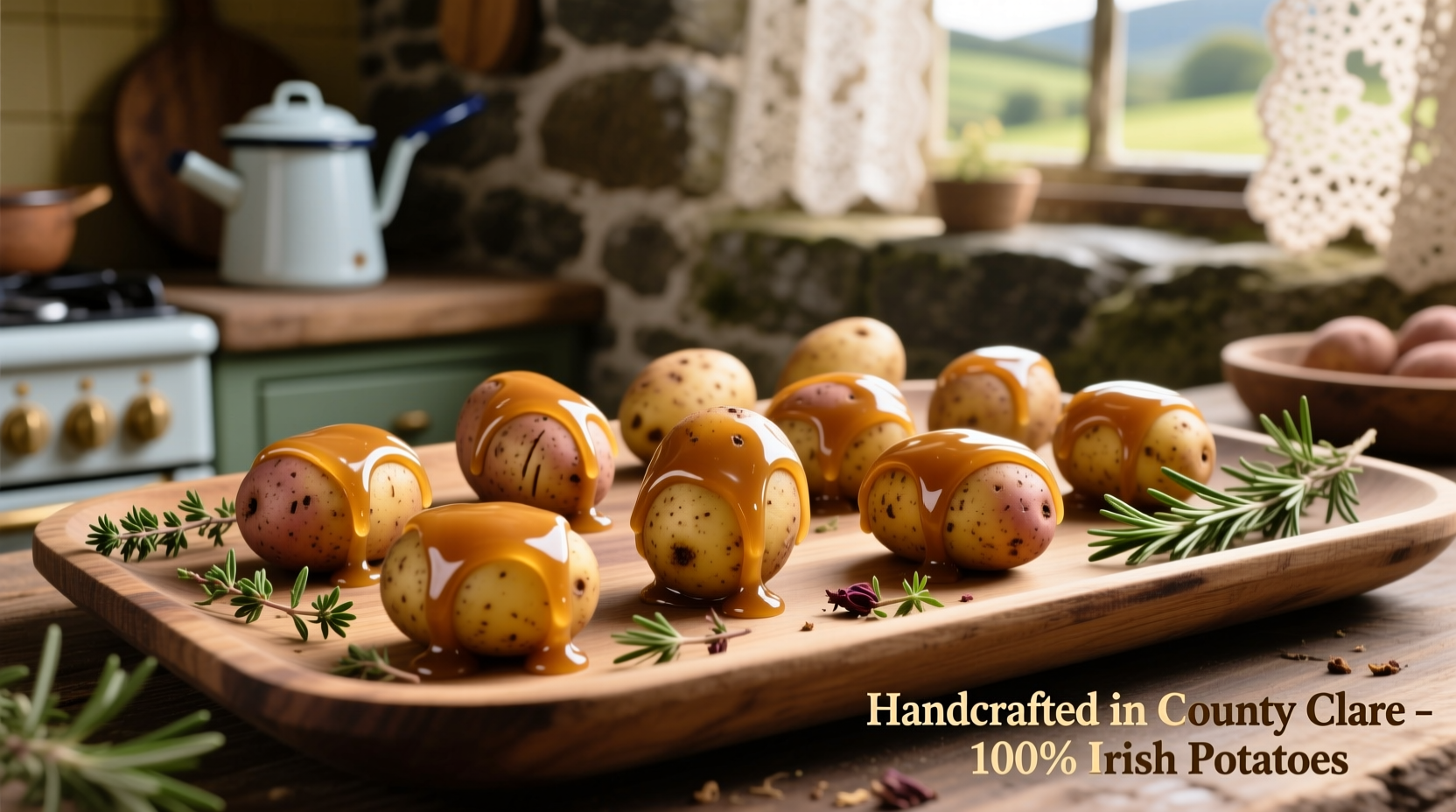Irish potato candy contains no actual potatoes despite its name. This traditional confection consists of marshmallow cream, shredded coconut, and powdered sugar shaped into small ovals and coated with cinnamon to resemble miniature potatoes, originating as an affordable St. Patrick's Day treat in early 20th century Irish-American communities.
Discover the Sweet Secret Behind This Misleadingly Named Treat
When you search for Irish potato candy, you're probably wondering: does this candy actually contain potatoes? The immediate answer is no. This beloved confection gets its name purely from its clever visual resemblance to small potatoes, not from any potato ingredients. Understanding this distinction is crucial to appreciating the candy's unique place in culinary history and cultural tradition.
Why the Confusing Name? Unpacking the Potato Paradox
The naming of Irish potato candy represents a fascinating case of culinary symbolism rather than literal ingredients. During the early 1900s when this treat emerged, potatoes were powerfully associated with Irish identity, particularly following the devastating Potato Famine of the 1840s-1850s that killed approximately one million people and triggered mass emigration.
Irish immigrants in America created this affordable candy as both a playful nod to their heritage and a practical solution during economic hardship. By crafting a sweet treat that visually mimicked potatoes using inexpensive pantry staples, they maintained cultural connection while enjoying a celebratory food that honored their history without relying on the crop that had become associated with tragedy.
| Common Misconceptions | Verified Facts |
|---|---|
| Contains mashed potatoes or potato starch | No potato ingredients whatsoever - primarily marshmallow, coconut, and cinnamon |
| Traditional recipe from Ireland | Created by Irish-Americans in the United States during early 20th century |
| Has savory potato flavor | Sweet confection with vanilla notes and coconut texture |
| Widely available commercial product | Primarily homemade tradition, rarely found in stores |
Historical Evolution: From Depression-Era Treat to Cultural Symbol
Tracing the development of Irish potato candy reveals how food traditions evolve within immigrant communities:
- 1845-1852: The Great Famine devastates Ireland, creating lasting cultural associations between potatoes and Irish identity (National Famine Museum, Ireland)
- Early 1900s: Irish immigrants establish communities in American cities, maintaining cultural traditions while adapting to new circumstances
- 1920s-1930s: Irish potato candy emerges as an affordable Depression-era treat using readily available ingredients
- Mid-20th century: The candy becomes particularly associated with St. Patrick's Day celebrations in Irish-American neighborhoods
- 1980s-present: Food historians document the tradition as homemade practice declines with changing food culture (Smithsonian National Museum of American History)

Authentic Ingredients and Preparation Method
The enduring appeal of Irish potato candy lies in its remarkable simplicity. Traditional recipes require just five basic ingredients that most households already have:
- Marshmallow cream (or melted marshmallows)
- Shredded coconut
- Confectioners' sugar
- Cinnamon (for the "dirt" coating)
- Vanilla extract (optional flavor enhancement)
The preparation process follows straightforward steps that make it ideal for family cooking activities:
- Mix marshmallow cream with shredded coconut until well combined
- Gradually incorporate confectioners' sugar until the mixture holds shape
- Roll small portions into oval shapes resembling miniature potatoes
- Cover each piece thoroughly with cinnamon
- Allow to set for several hours before serving
Cultural Context and Modern Practice
While not an authentic Irish tradition (it originated in America), Irish potato candy has become meaningful in Irish-American communities as a symbol of cultural adaptation. It represents how immigrant communities maintain connections to their heritage while creating new traditions in their adopted homes.
Today, the candy serves specific cultural functions:
- St. Patrick's Day tradition: Primarily made in the days leading up to March 17th
- Family bonding activity: Often prepared as a multi-generational cooking project
- Cultural education: Teaches children about Irish-American history through food
- Community connection: Shared at Irish cultural society events and church gatherings
Food historians note that the candy's popularity has declined somewhat in recent decades as commercial candy options have expanded, but it remains a cherished tradition in many Irish-American households. The Smithsonian's National Museum of American History has documented several family recipes as part of their foodways collection, recognizing the candy's significance in American immigrant culinary history.
Where to Experience Authentic Irish Potato Candy
Finding genuine Irish potato candy requires knowing where to look, as commercial production remains limited:
- Homemade sources: Your best option is learning to make it yourself using traditional recipes passed down through Irish-American families
- Specialty bakeries: Some Irish-American bakeries in cities like Boston, New York, and Chicago produce it seasonally around St. Patrick's Day
- Cultural events: Irish festivals and heritage society gatherings often feature homemade versions
- Avoid: Most commercially labeled "Irish potato candy" contains artificial ingredients and doesn't follow traditional preparation methods
Preserving This Unique Culinary Heritage
As with many immigrant food traditions, Irish potato candy faces challenges in being passed down through generations. Food preservation organizations have recognized its cultural significance:
The National Council for the Traditional Arts has documented Irish potato candy preparation as part of their American food heritage preservation efforts. Local Irish cultural centers across the United States regularly host cooking demonstrations during Irish American Heritage Month (March) to ensure these traditions continue.
When making Irish potato candy today, authenticity comes from understanding its historical context and maintaining the simple preparation method that has been passed down through generations. The candy's enduring appeal lies not just in its sweet taste, but in the cultural story it represents about resilience, adaptation, and maintaining identity through food traditions.











 浙公网安备
33010002000092号
浙公网安备
33010002000092号 浙B2-20120091-4
浙B2-20120091-4